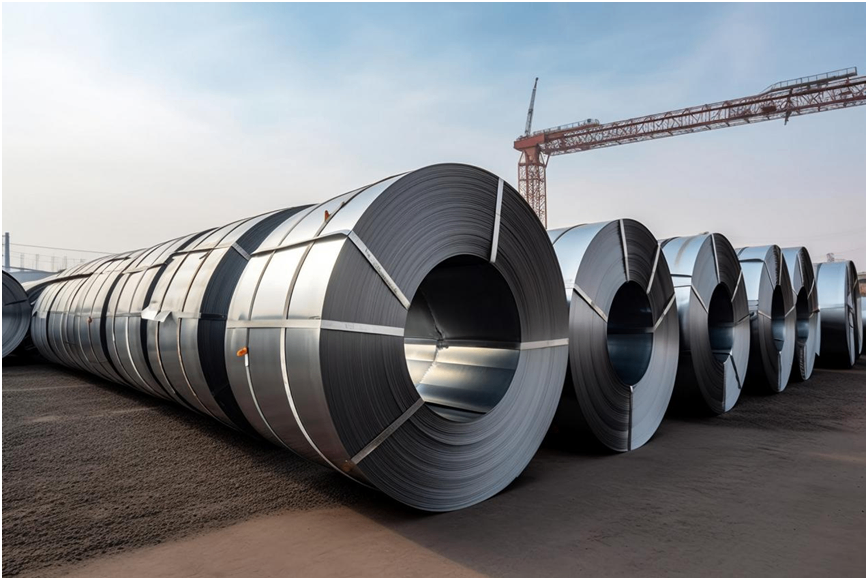On the afternoon of June 5, China’s Ministry of Commerce (MOFCOM) held its regular press conference. A reporter asked for comments on the US raising tariffs on imported steel, aluminum, and their derivatives from 25% to 50%, with the policy formally taking effect on the 4th.
Image Source:699pic.com
MOFCOM Spokesperson He Yongqian stated that China has repeatedly emphasized that the Section 232 tariffs are a classic example of unilateralism and protectionism. These tariffs were long ago ruled by the WTO dispute settlement mechanism to violate WTO rules. The US further increasing tariffs on steel, aluminum, and their derivatives not only harms others and itself but also fails to safeguard industrial security. It will seriously disrupt the stability of global industrial and supply chains. Multiple countries have already opposed the US approach. China urges the US to respect economic laws, abandon zero-sum thinking, stop generalizing and abusing the concept of national security, work with all parties to uphold the rules-based multilateral trading system, resolve respective concerns through equal dialogue, and jointly maintain the stability of global industrial and supply chains.
It is reported that as early as March 2018, former US President Donald Trump imposed import tariffs on steel and aluminum products from multiple countries and regions on the grounds of threatening US national security, with a 25% tariff on steel and a 10% tariff on aluminum. Later, exemptions were granted to many countries due to factors such as domestic industry impacts. After Trump took office again as US President on February 10, 2025, he announced a 25% tariff on all imported steel and aluminum, which took effect on March 12. At a rally in Pennsylvania on May 30 (local time), Trump said he would raise the tariff on imported steel from 25% to 50%. On June 3, Trump signed an executive order announcing the increase of tariffs on imported steel, aluminum, and their derivatives from the current 25% to 50%, effective June 4, 2025.
The White House executive order states that the 25% tariff on steel and aluminum imported from the UK will remain. From July 9, 2025, the US may adjust applicable tariff rates and set import quotas for steel and aluminum by the provisions of the Environmental Policy Statement. If the UK is determined to have failed to comply with the relevant provisions of the Environmental Policy Statement, the applicable tariff rate may be increased to 50%.
According to data from the US International Trade Commission, the US imported $147.3 billion worth of steel and aluminum products in 2024. The main sources of US steel imports include Canada, Mexico, Brazil, South Korea, and Vietnam, while the main source of aluminum imports is Canada. According to data from the China Iron and Steel Association, China exported 110.716 million tons of steel in 2024, a year-on-year increase of 22.7%, approaching the highest level in nearly a decade. China’s steel exports to the US amounted to only about 890,000 tons, accounting for just 0.8% of China’s total steel exports, so the tariff increase will have a minimal direct impact on China’s steel exports. However, some worry that the US tariff policy may indirectly affect China’s steel exports by impacting downstream product exports and the global trade system.
So far, the US policy of raising steel and aluminum tariffs to 50% has drawn criticism from countries such as Canada and the EU.
On the evening of June 3, the Office of the Canadian Prime Minister issued a statement calling the US doubling of steel and aluminum tariffs "illegal and unreasonable." Canada’s new government is negotiating with the US to seek the removal of these and other tariffs. On June 4, Maroš Šefčovič, the European Commission’s Commissioner for Trade and Economic Security, said the move would not help ongoing EU-US negotiations. The EU and the US together account for about 30% of global trade. If their relations cannot be maintained normally, it will negatively impact the global trade system. On June 3, Japanese Minister of Economic Revitalization Ryoei Akazawa expressed "deep regret" over the US tariff increase on steel and aluminum and "strongly urged" the US to revise the relevant policy. Eiichi Kuchiki, an economist at the Nomura Research Institute, predicts that Japan’s annual steel and aluminum exports to the US will decrease by approximately ¥114.5 billion, dragging down Japan’s nominal GDP growth rate by 0.02 percentage points annually.
Some within the US worry that the increased costs of importing and using steel and aluminum will ultimately be passed on to ordinary American consumers. On June 3, the Organization for Economic Co-operation and Development (OECD) released an economic outlook report lowering its forecast for US economic growth this year and raising its forecast for overall US inflation in 2025. The US economy is expected to grow by 1.6% this year and 1.5% in 2026.



